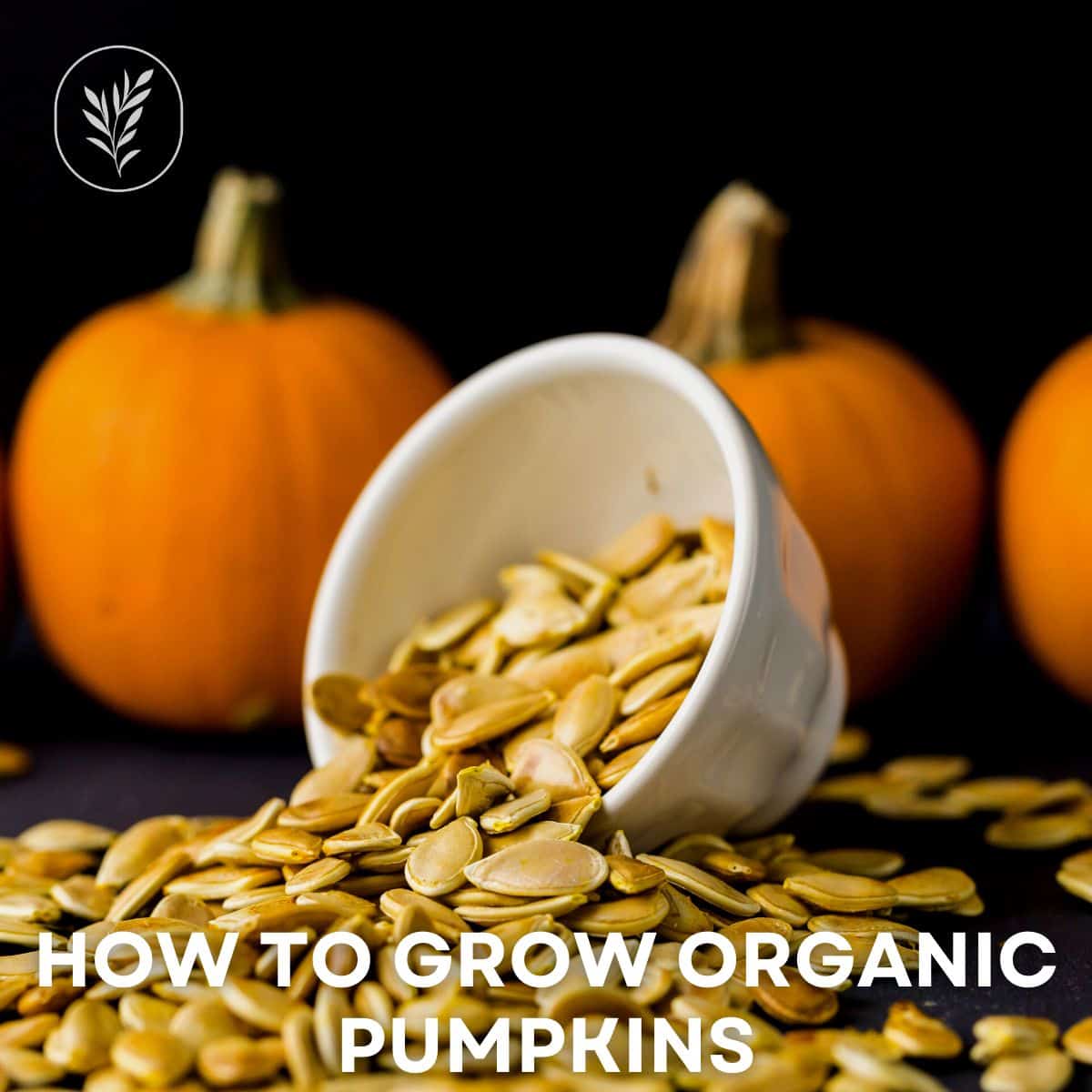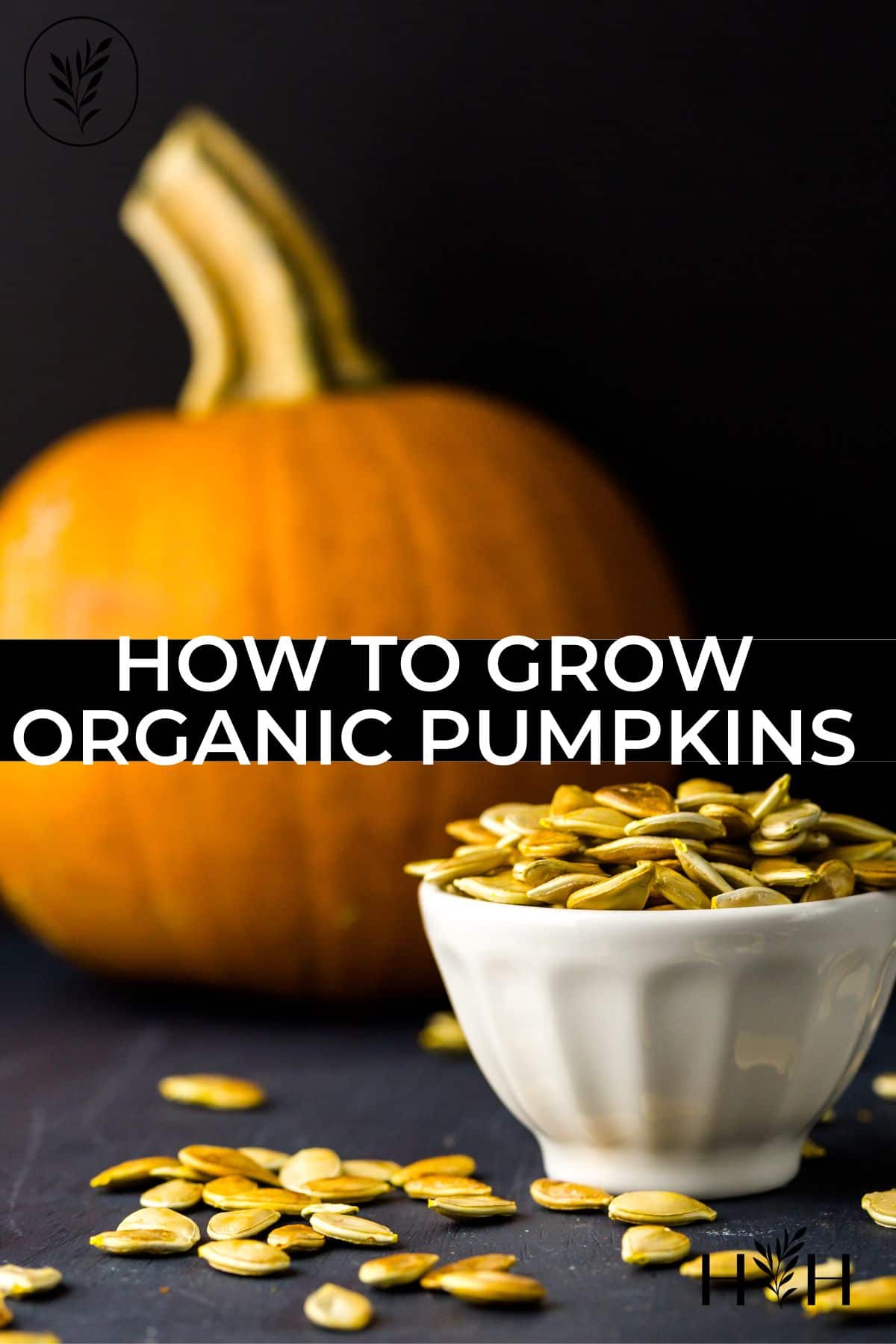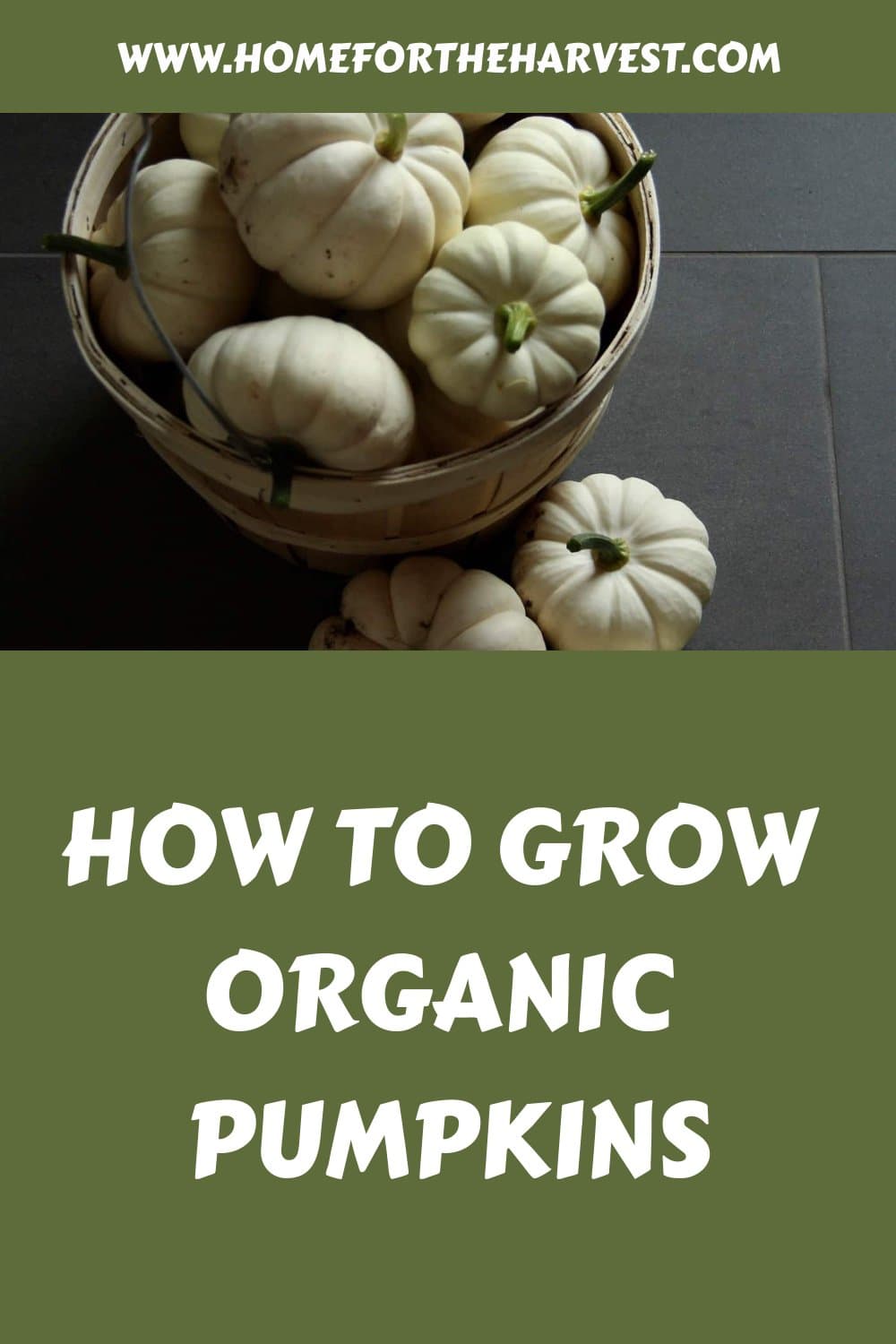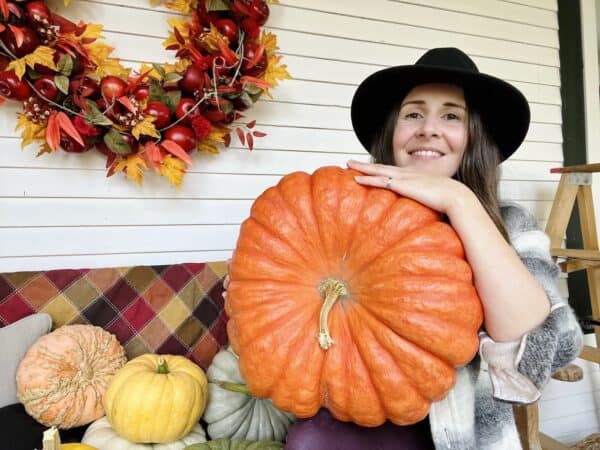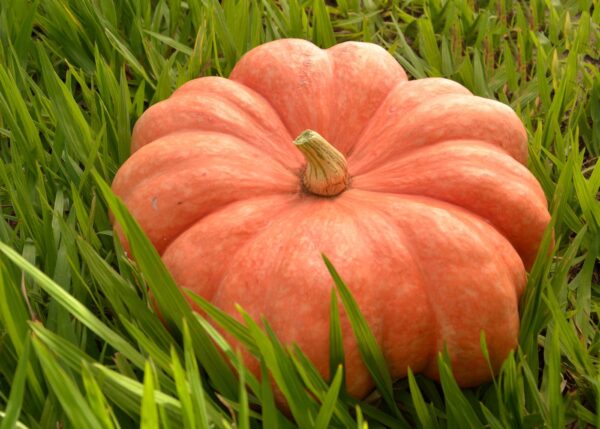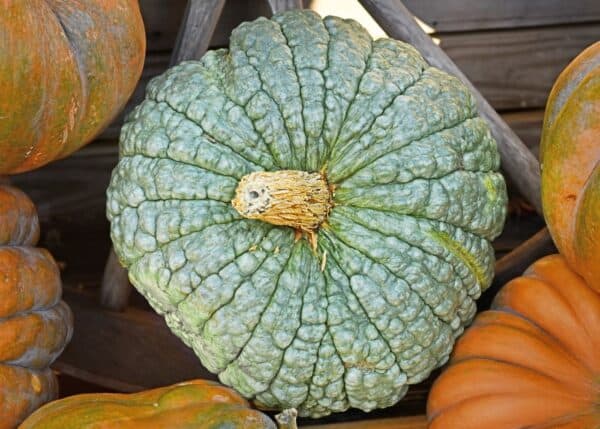It’s pumpkin season! Fall is full of pumpkin decor, pumpkin pie, and pumpkin spice everything. Fall is also a good time to plan next year’s garden, including which kinds of pumpkins you’d like to grow yourself. Here’s how to grow organic pumpkins in your own backyard. It’s as easy as (pumpkin) pie!
How to grow organic pumpkins
Pumpkins are one of the easiest plants to grow in your garden. They’re perfect for beginner gardeners, kids, and anyone else who wants to learn how to grow organic pumpkins.
Pumpkins are large plants that require a lot of space in the garden. Pumpkin vines will also grow best in locations with lots of sunlight and good air circulation. They thrive in nutrient-rich, well-draining soil. Compost is the perfect soil amendment for growing organic pumpkins. If you don’t have your own homemade compost, use an organic fertilizer like Pro-Mix Multi-Purpose Organic Garden Fertilizer.
Pro-Mix products used in this post were provided by PremierTech, the makers of Pro-Mix.
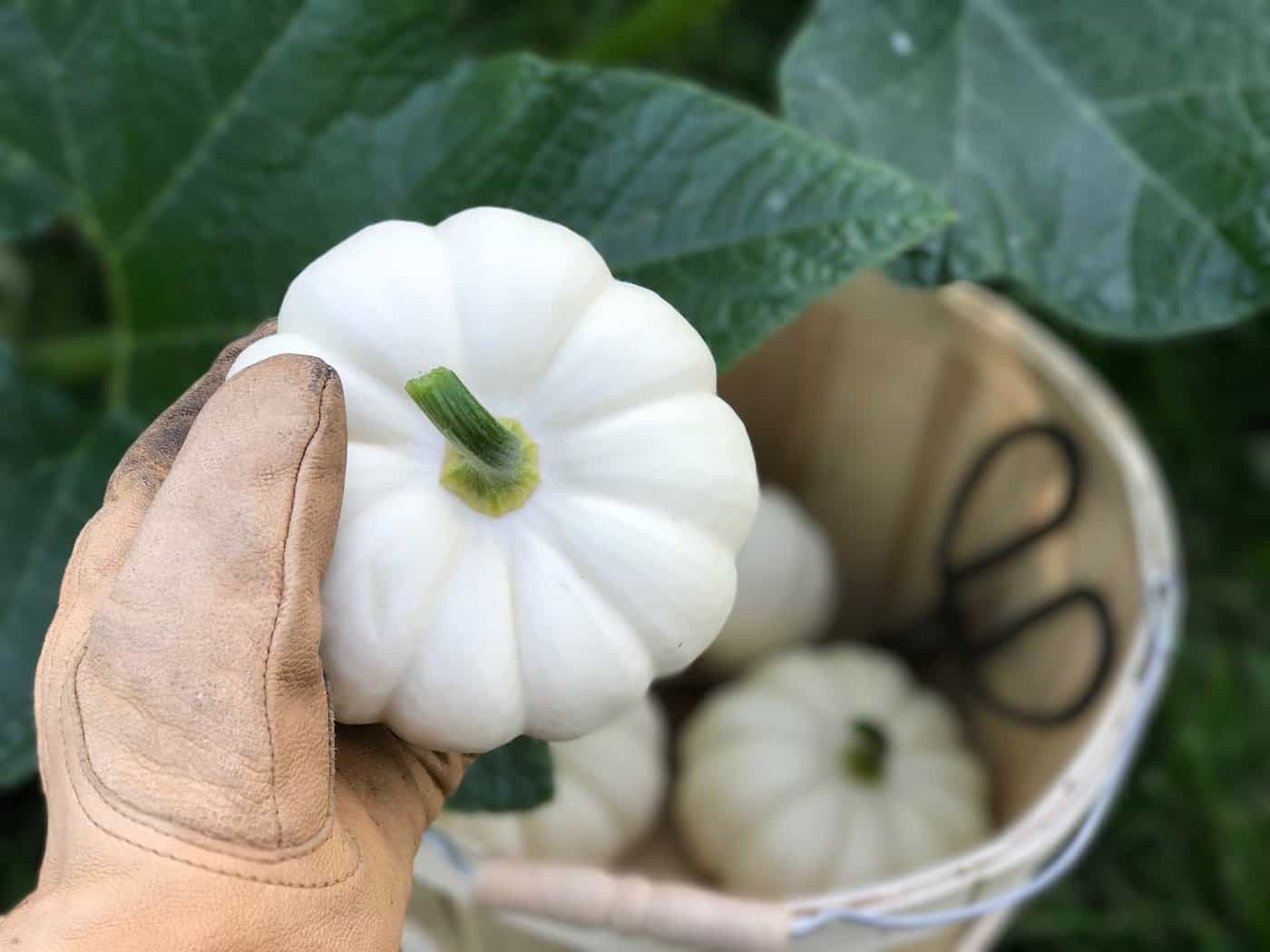
Choosing a pumpkin variety to grow
Most pumpkin plants are grown at home from seeds, but it is also possible to purchase seedlings at a plant nursery. When choosing pumpkin seeds or seedlings, consider how you’d like to use your pumpkins. Some varieties are perfect for autumn decor while others are great for cooking pumpkin pies.
Pumpkins also come in many different sizes, from mini apple-sized pumpkins to giant pumpkins that can require tractors to lift them! Choose a variety that suits your needs. This year we grew mini white pumpkins.
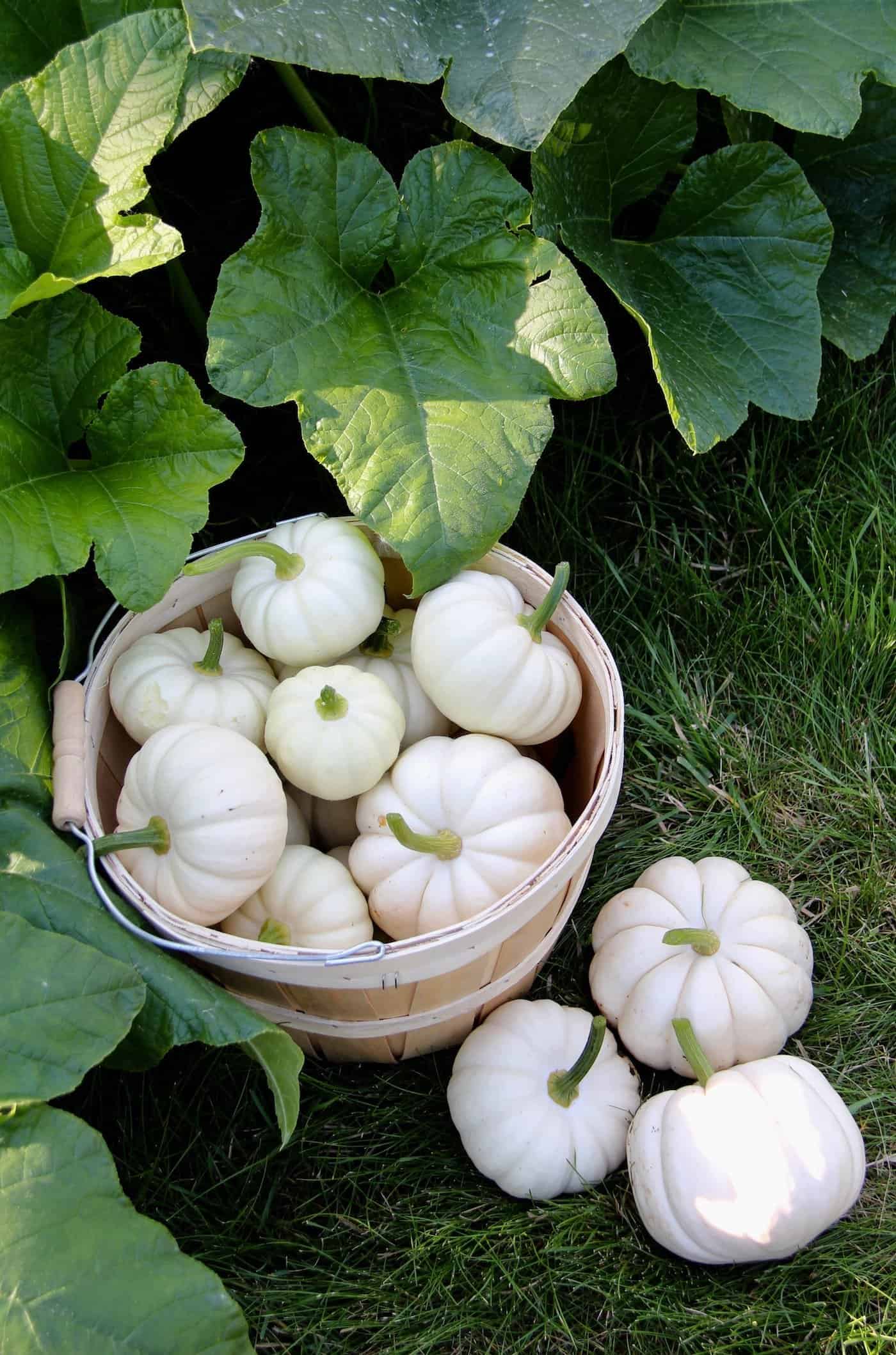
Choosing a growing location for your pumpkin plants
Choose a large location in your garden that receives at least 6 hours of sunlight on sunny days. Sometimes pumpkin leaves can wilt in very hot sunlight, but they will recover in the evening if they have enough water.
Pumpkins are large plants. Mini pumpkins can be trellised, but larger pumpkin vines may take over 100 square feet of garden space! Give your pumpkins room to grow, and they’ll be much happier than if they’re squished together, competing for sunlight. The vines will also need ample air circulation to minimize the chance of mildew developing.
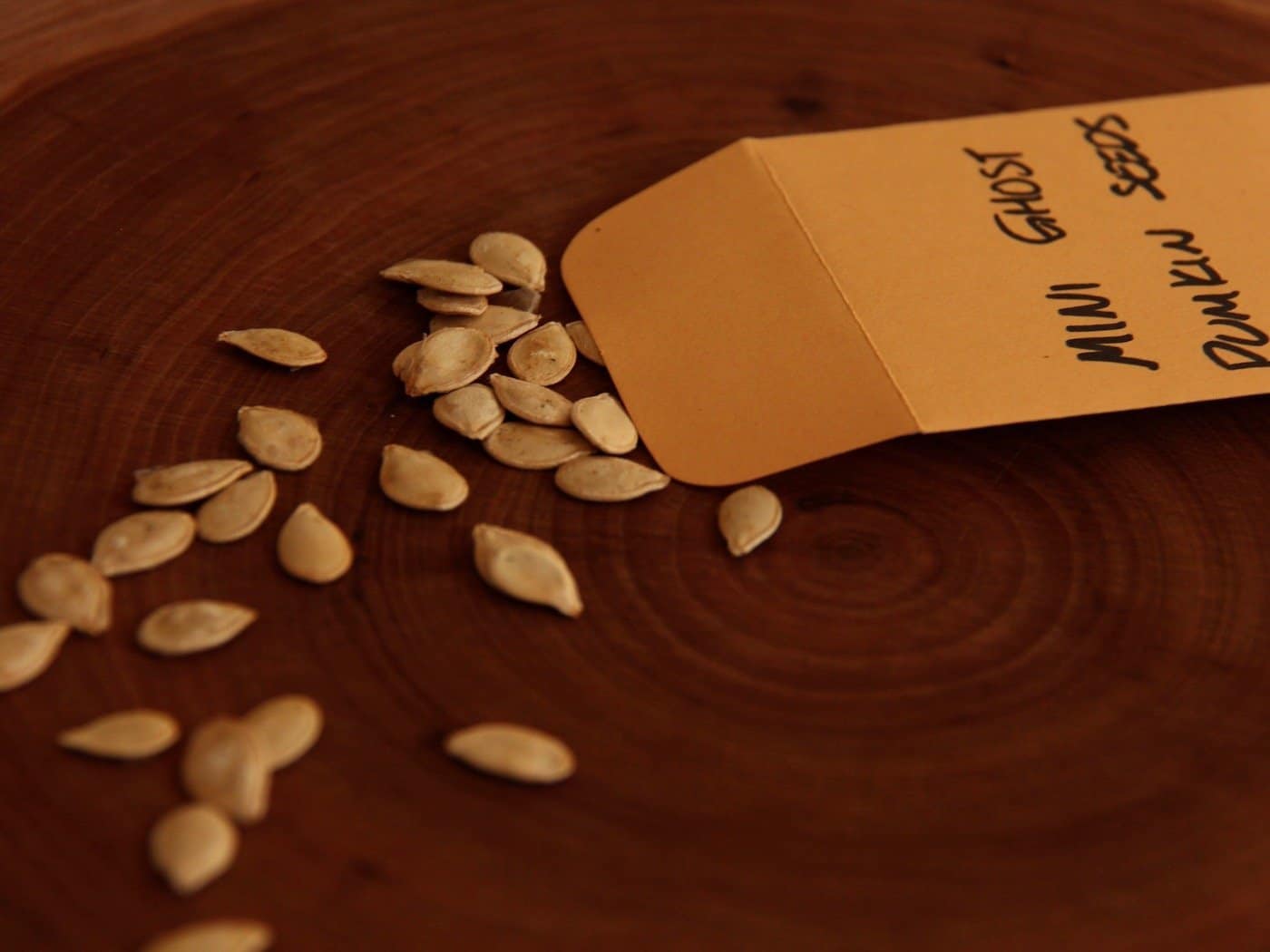
Planting organic pumpkins in your home garden
Pumpkins are easy to grow from seeds. They can either be grown as seedlings indoors or grown directly from seeds placed in the garden. Pumpkin roots aren’t the easiest to transplant, so if they are grown as seedlings indoors, most gardeners choose to use soil blocks or compostable pots rather than plastic pots. Using soil blocks or compostable pots means that the whole seedling pack, pot and all, can be planted in the garden to minimize transplant shock.
Pumpkin seeds like warm weather. It can be tempting to plant pumpkins on the first frost-free day to maximize growing days (and pumpkin size), but the pumpkin plants won’t be happy with cool overnight temperatures. Wait until the danger of frost has passed and the ground outside has warmed with the springtime weather. Daytime temperatures should be higher than 60°F or 16°C for good germination of the pumpkin seeds.
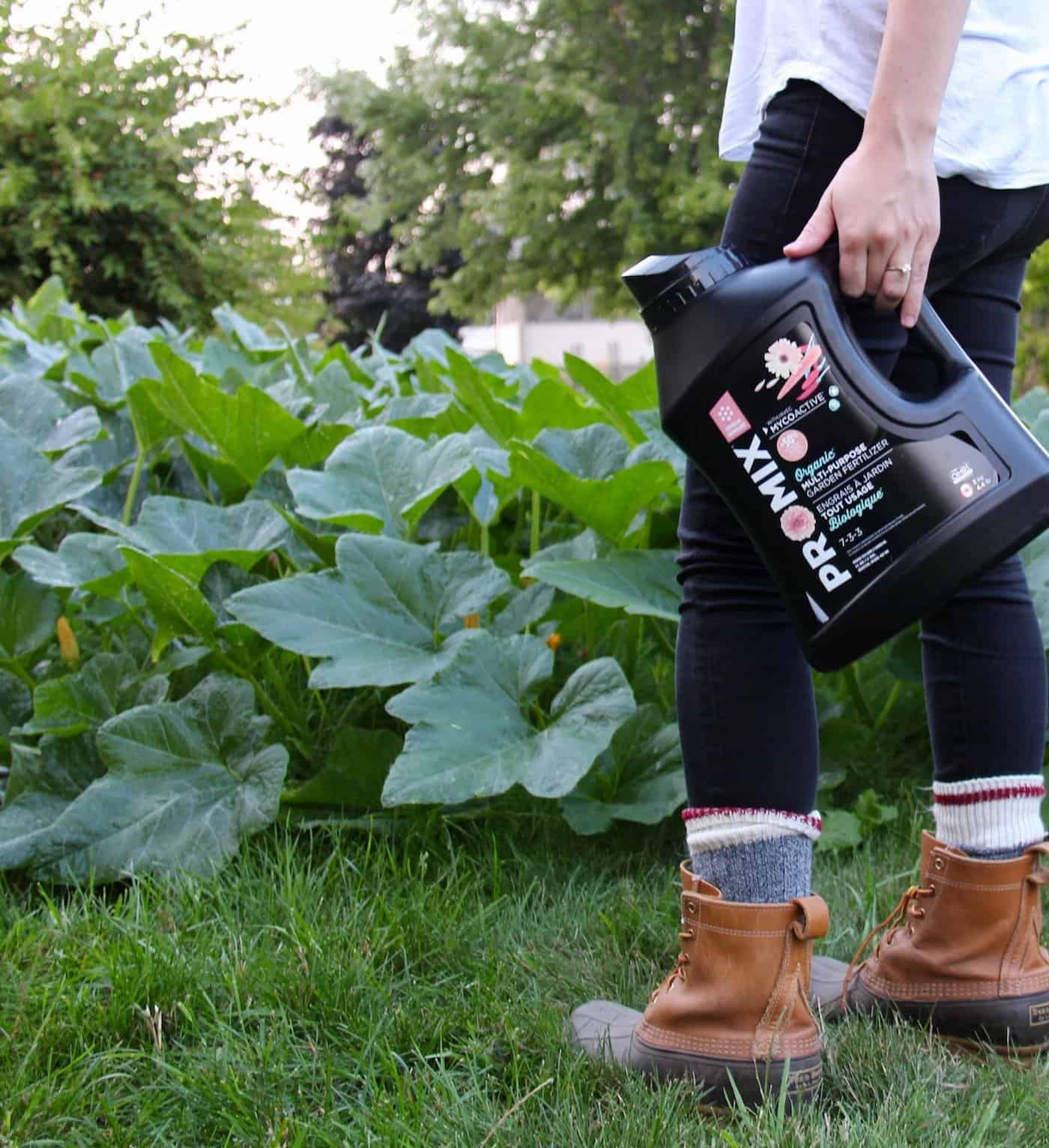
Caring for organic pumpkins in your garden
Pumpkin plants grow well with full sunlight, consistent watering and lots of nutrients. Access to nutrients is a key part of growing healthy pumpkins. Homemade compost is a great general soil amendment for organic pumpkins as is a high-quality organic fertilizer like Pro-Mix’s Multi-Purpose Fertilizer. At the beginning of the season, compost can be worked into garden soil in a two-foot radius of pumpkin plants. Throughout the season, fertilize pumpkin plants monthly with an OMRI-listed organic fertilizer to support healthy growth.
If your focus for your pumpkins is growing the biggest pumpkins possible, choose an organic fertilizer specifically formulated for producing fruits/vegetables. These types of fertilizers have a different balance of nutrients to support maximum fruit production rather than general plant health (like this Pro-Mix Organic Fruit and Vegetable Fertilizer).
Another tip for growing large pumpkins is to remove all but the largest fruit from each pumpkin plant. That way the plant will channel all of its energy into a single large fruit. If your pumpkin vines all have lots of room to grow, sunlight, and nutrients…chances are most of your vines will all produce a large pumpkin.
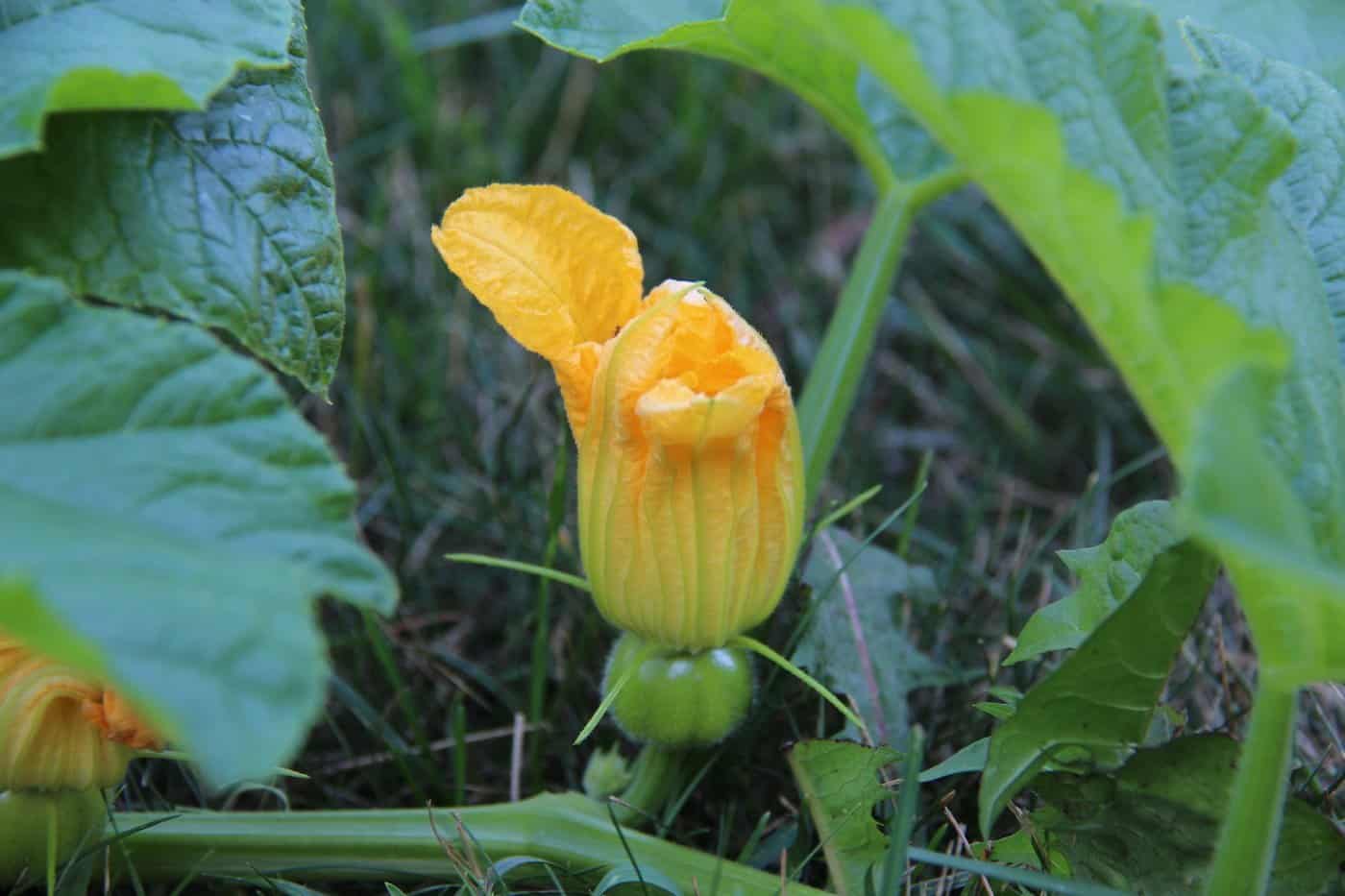
Pests and diseases that can affect organic pumpkins in your garden
Pumpkins are generally a pest-free plant, but there is one pest in particular that can really get in the way of a good pumpkin harvest. The squash vine borer is a small moth that lays eggs early in the season, which then hatches into larvae and burrows into the squash vine. They burrow into the vine right at the base of the plant, which can actually destroy the whole plant as the white-colored larvae grow inside the vine. This is rather heartbreaking for the gardener as the plant looks fine but then all of a sudden dies with little warning.
Squash vine borer can be prevented by using floating row covers, wrapping gauze around the base of the pumpkin vine or delaying transplant until after the vine borers lay their eggs for the year. If you choose to go the gauze root, wrap medical gauze around the base of the vine, extending the gauze down into the soil by at least an inch and extending up over the exposed vine for a few inches. This should at least discourage the borer from choosing your vines to lay eggs.
Squash vine borer moths are also said to be attracted to the color yellow. Some gardeners place yellow bowls in their gardens full of water to drown moths that are considering choosing their gardens to lay their eggs.
As fall approaches, powdery mildew can become a problem with squash vines such as pumpkins. Mildew generally develops in moist, humid environments with low air circulation. Mildew can be minimized by spacing plants apart in an area with air circulation, as well as avoiding overhead watering. Use drip lines to irrigate your vines if possible.
If powdery mildew does develop, it will look like the leaves have a white powder all over them. Spray the leaves with a mixture of dissolved baking soda and liquid soap or with milk (dairy) to counteract the mildew. Destroy infected plants at the end of the season and consider rotating next year’s pumpkin crop to a new location.
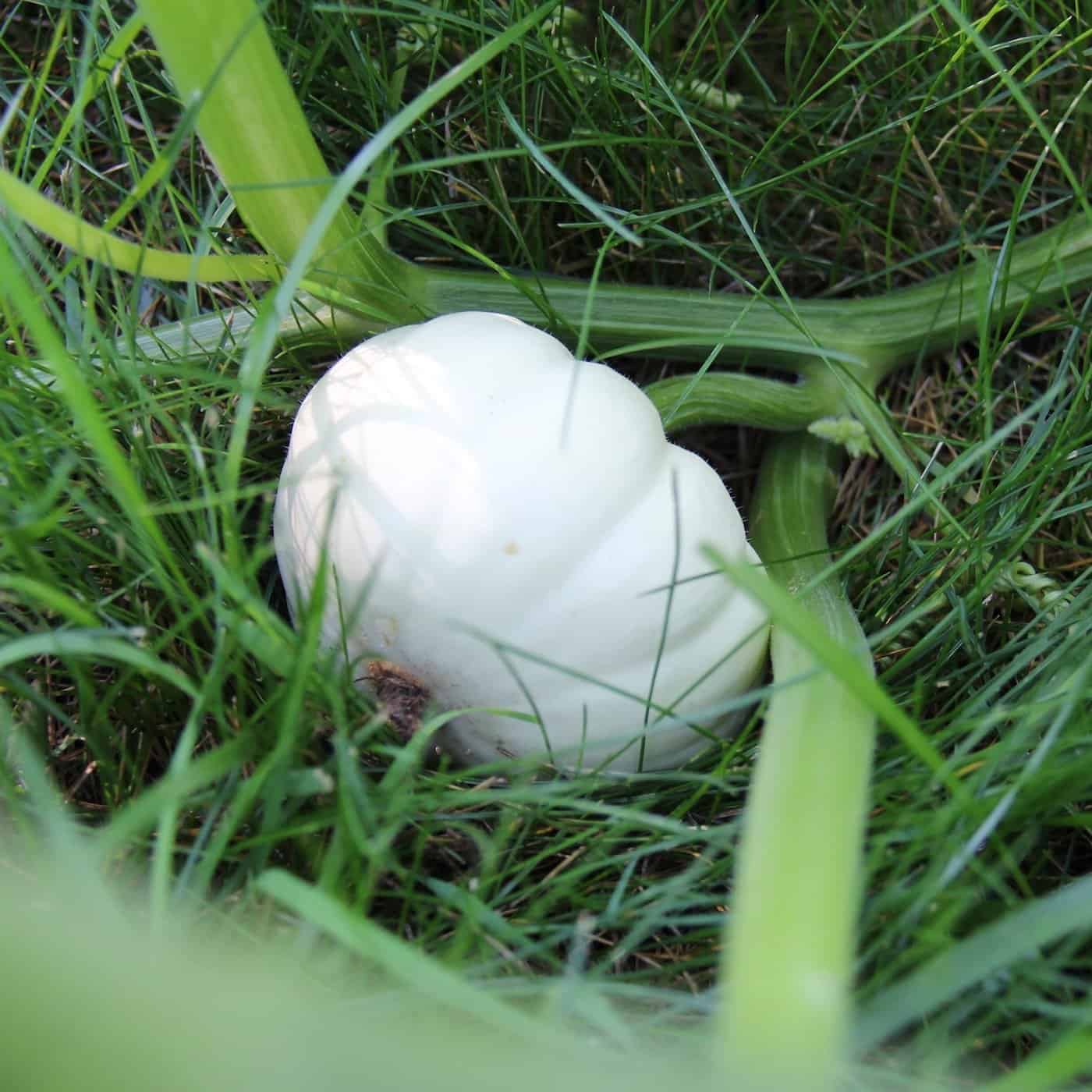
Harvesting organic pumpkins from your garden
The best time to harvest your organic pumpkins is when the skin is tough enough that your fingernail cannot easily poke through it. Since pumpkins don’t change color much after harvesting, it’s good to wait until the pumpkins are the desired color before harvesting. It’s also easy to harvest pumpkins after the frost has extinguished the leaves (this makes the pumpkins easy to spot! Don’t wait until truly freezing weather to harvest the pumpkins though, as they will start to decompose.
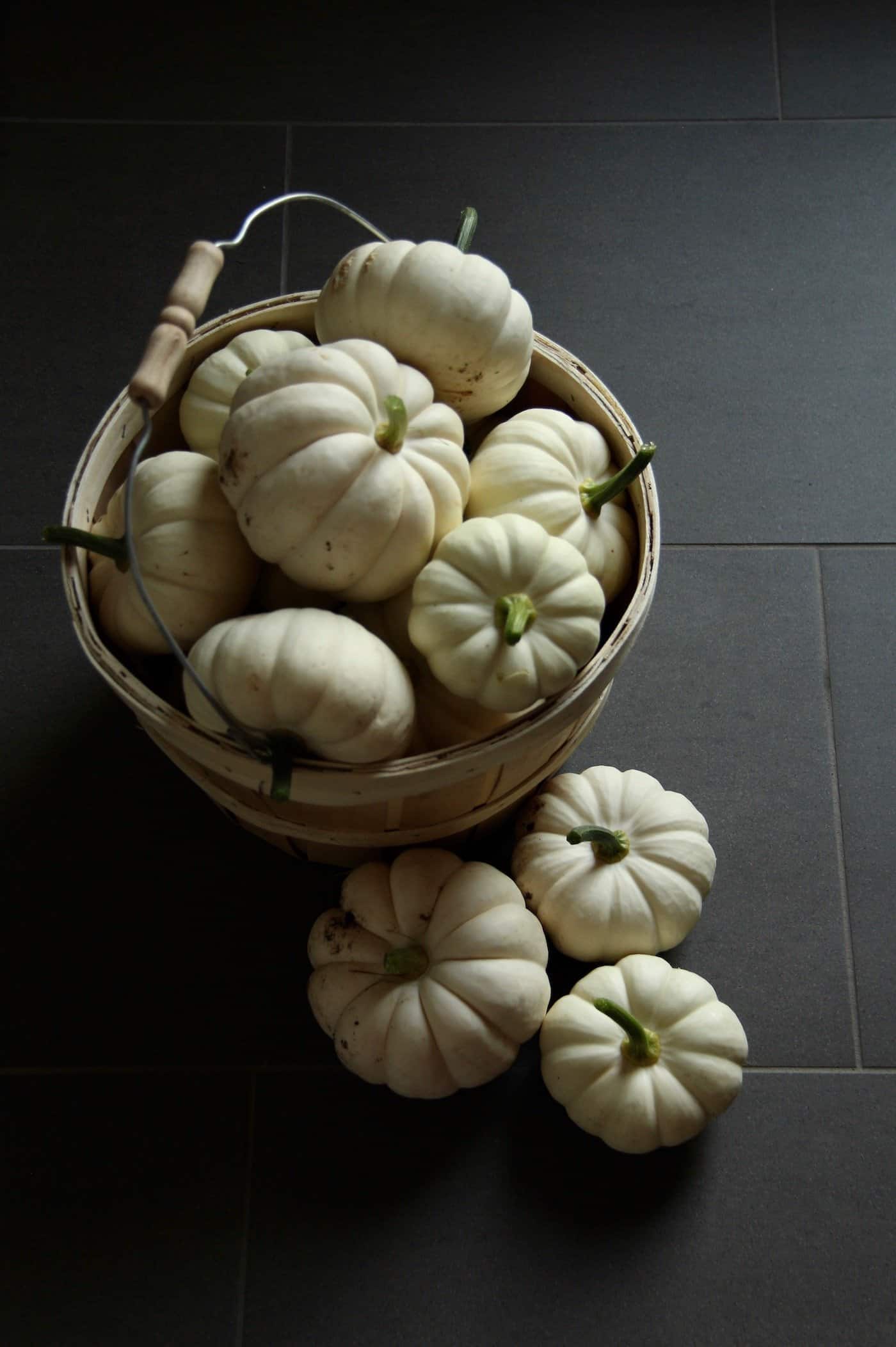
Use gloves when harvesting pumpkins as the vines have abrasive hairs on them which can irritate the skin. Small pumpkins can be cut from the vine with garden scissors or pruners. Large pumpkins may require a sharp utility knife or garden saw.
Leave several inches of stem attached (and hopefully a few cute tendrils if possible). Really big pumpkins may be difficult to lift and should be carried cautiously (or even picked up with machinery like a tractor).



